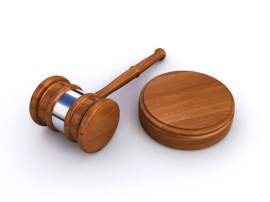
Facts You Did Not Know About The Unified Court System

What is a Unified Court System?
A unified court system effectively consolidates separately-run courts into one all-encompassing court system that is centrally governed. The process of court unification is typically delivered and designed to address certain problems that revolve around the proliferation of courts at the local level. These court systems are typically established by community members to oversee and administer judgments for cases of a local, rather than national, nature.
By placing into an organized agglomeration, a unified court system can achieve judicial efficiency and consistency that was otherwise impossible under a fragmented administration. The presence of a unified court system effectively allocates all resources and legal expertise into one machine. The presence of fragmentation can often complicate the ability to deliver and administer court decisions in a given jurisdiction.
The concept of a Unified Court System
In a historical sense, those countries who operated with a judiciary-based English common law system established a dominating court system to administer and handle cases under the coordinating national laws. As a result, the local jurisdictions were left to create their own legal systems to handle those issues, which fell under the community’s local laws. This relationship gave way to the creation of specialty courts, which possess a limited judicial power and were often distinguished by particular subject matter.
These specialized courts were referred to as municipal courts, city courts, magistrate courts, domestic relation courts, juvenile courts, justices of the peace, or by other labels that reflected the specific nature of their proceedings.
Why is a Unified Court System needed?
The local court system in a given area was typically created as independent bodies. The specific courts were different from each other and inherently focused on a particular aspect of litigation. As a result of these characteristics, each court system was dependent on need and interest. This specialized classification often led to overlapping. This led to complications, for the legal standards of each court system would differ even though the subject matter would remain somewhat analogous.
To worsen this problem, some court systems would appoint judges with no formal expertise or training for the particular subject matter that the court presided over. Ultimately, in addition to general inaccuracies and muddled interpretations, this system created a situation where the court system could not keep track of previous decisions rendered and subsequently passed down by other courts.
The Creation of a Unified Court System
In the early 20th Century, the idea of a unified court system became a popular subsection of court reform. The surge in popularity for the creation of a unified court system was sparked by an assortment of legal scholars who called for an end to the fragmentation of court systems and proposed that a centralized administration and judiciary system would effectively streamline the ability to preside over legal matters.
Through the recommendation of various scholars, a number of local and national jurisdictions considered legislation that would abolish the old judiciary system and consolidate trial courts into a single court or a court for major offenses and then a separate one for minor infractions.
The creation of a unified court system remains a highly-contested issue. The unified court system ballot has spread to many countries. The main reason why the unified court system has not been adopted by the majority of systems is because local courts are not eager to give up their power and local politicians are hesitant to lose their appointing privileges.
That being said, many states in America have implemented a unified court system and many countries (such as Canada) are moving towards the creation of a unified court system.
NEXT: Judicial Branch



















